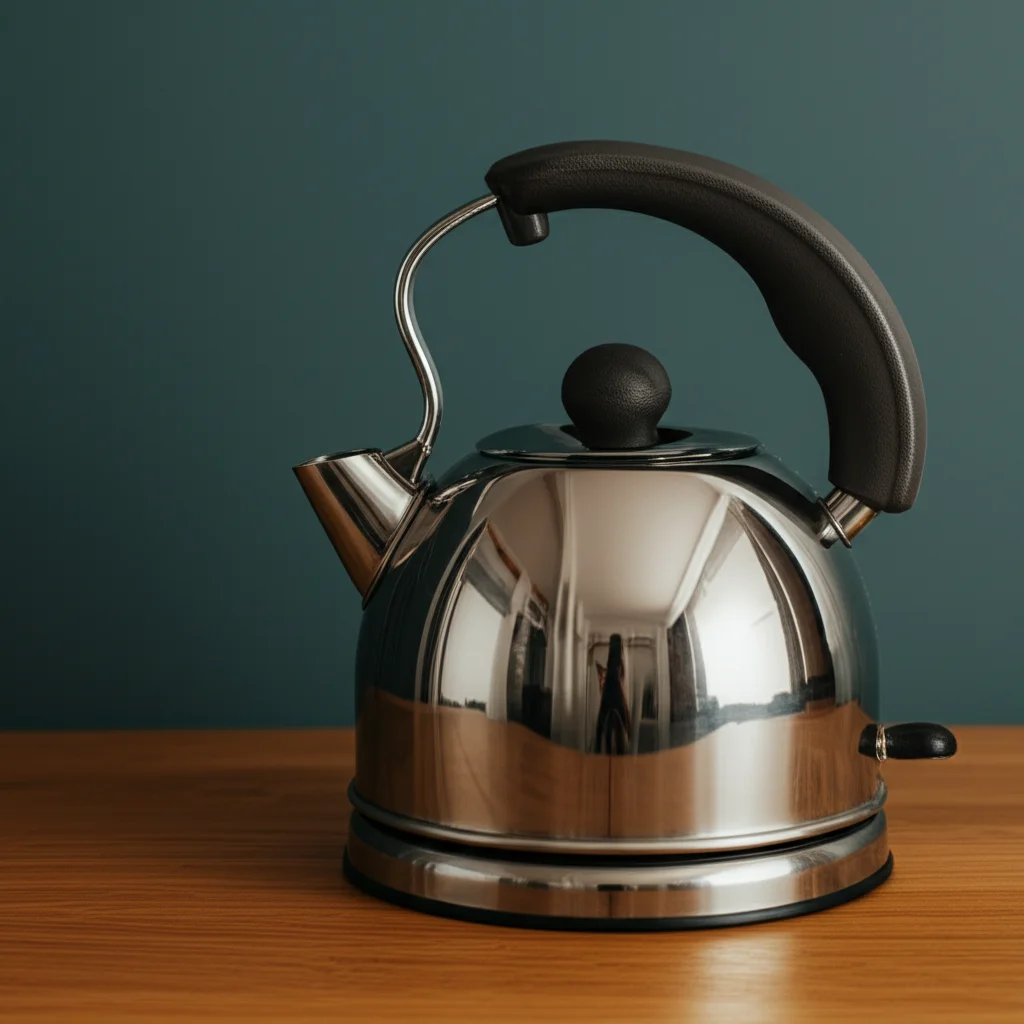· Kianna Connelly · Home Maintenance · 15 min read
How To Get Bed Bugs Out Of Wood Furniture

Eliminating Bed Bugs From Wood Furniture
Discovering bed bugs in your home can feel overwhelming. When these tiny pests infest wood furniture, the problem seems even more daunting. They hide in cracks, crevices, and joints, making them hard to find. I know this situation can feel frustrating, but rest assured, you can remove them. This guide will teach you how to get bed bugs out of wood furniture effectively. We will cover inspection, preparation, various treatment methods, and prevention tips. You will gain the knowledge to tackle this problem head-on and restore peace to your home.
Takeaway
- Inspect wood furniture thoroughly for bed bug signs like fecal spots and shed skins.
- Prepare furniture by disassembling and cleaning all surfaces.
- Use heat treatments (steam, heat chambers) or cold treatments (freezing) for effective eradication.
- Apply targeted chemical or natural dust treatments carefully.
- Vacuum frequently and seal cracks to prevent reinfestation.
How do I get bed bugs out of wood furniture?
To get bed bugs out of wood furniture, first, thoroughly inspect all cracks and crevices for signs of bugs. Then, use a combination of methods. These include vacuuming, steam cleaning, heat treatment, or targeted pesticide application. Sealing cracks in the wood after treatment helps prevent reinfestation.
Understanding Bed Bugs and Wood Furniture Infestations
Bed bugs are small, reddish-brown insects. They feed on human blood. They are flat and oval-shaped before feeding. After feeding, they become swollen and more reddish. These pests often live close to their food source. This means they like beds, mattresses, and bed frames. However, they can also infest other furniture, especially wood. Wood furniture provides many hiding spots.
Bed bugs hide in small cracks and crevices. They fit into spaces as thin as a credit card. Wooden bed frames, dressers, nightstands, and chairs are perfect for them. They hide in joints, under drawers, behind headboards, and in screw holes. They also hide in the grain of unfinished wood. Understanding their hiding habits helps you find them. Knowing where they live is the first step in effective removal.
A bed bug infestation in wood furniture can spread quickly. Female bed bugs lay several eggs each day. These eggs hatch in about one to two weeks. Young bed bugs, called nymphs, mature in about a month. This rapid life cycle means a few bugs can become many bugs very fast. Early detection and treatment are important. Ignoring the problem allows the population to grow. It also makes removal harder. My goal here is to help you act quickly.
You must identify the problem correctly. Many other small bugs can be mistaken for bed bugs. Look for specific signs. These include small blood stains on sheets, dark fecal spots, or shed skins. Live bugs are also a clear sign. If you suspect bed bugs, confirm it. This confirmation guides your treatment plan. Then you can choose the right approach for your wood furniture.
Thorough Inspection: Finding Bed Bugs in Wood
Finding bed bugs in wood furniture requires careful inspection. These pests are excellent hiders. They can tuck themselves into very small spaces. Start by shining a bright flashlight into every crack and crevice. Use a magnifying glass for a closer look. Bed bugs prefer dark, undisturbed areas. Pay close attention to joints, seams, and screw holes. Check all sides of the furniture.
Begin your inspection with the bed frame itself. Bed bugs often start here. Look along the edges and under the slats. Examine the headboard and footboard. If your bed has drawers, remove them. Inspect the inside and outside of the drawer frames. Also, check the bottom and sides of the drawers. Many people ask, How to tell if a mattress has bed bugs? Knowing these signs helps confirm the source.
Next, move to other wooden furniture pieces near the bed. This includes nightstands and dressers. Pull drawers completely out. Inspect the drawer glides and the tracks inside the furniture. Turn furniture upside down if possible. Look at the underside of tables and chairs. Bed bugs often hide in corners where wood pieces meet.
Look for specific signs of bed bug activity. You might see small, dark spots. These are bed bug fecal stains. They look like tiny ink dots. You might also find shed skins. Bed bugs shed their exoskeletons as they grow. These look like empty, translucent shells. Sometimes, you will see the bed bugs themselves. They are usually reddish-brown. If you bought used furniture, remember to how to clean used furniture to prevent bed bugs effectively. This pre-emptive cleaning can save you from big problems.
Make a note of all areas where you find activity. This map will guide your treatment efforts. A thorough inspection ensures you do not miss any hiding spots. Missing even a few bugs can lead to reinfestation. Take your time with this step. It is critical for successful bed bug removal.
Preparing Wood Furniture for Bed Bug Treatment
Proper preparation is crucial before treating your wood furniture. This step maximizes the effectiveness of your efforts. It also helps prevent the spread of bed bugs to other areas. First, clear all items from the affected furniture. Remove bedding, clothes, books, and anything else stored inside or on the furniture. Place these items in sealed plastic bags immediately.
Once cleared, move the furniture away from walls and other items. This gives you full access to all sides. Disassemble the wood furniture as much as possible. Take apart bed frames, remove drawers from dressers, and separate any detachable parts. This exposes more hiding spots. Bed bugs often hide in the joints and seams that become visible when disassembled.
Next, clean the furniture thoroughly. Use a stiff brush or a vacuum with a narrow crevice attachment. Vacuum all surfaces, cracks, and crevices. Pay special attention to areas where you found signs of bed bugs. Immediately after vacuuming, empty the vacuum cleaner bag or contents into a sealed plastic bag. Dispose of this bag outside your home in a secure trash bin. This prevents bed bugs from escaping back into your house.
After vacuuming, wipe down all surfaces. You can use a damp cloth with a mild cleaner. For general wood cleaning, understanding how to clean wooden furniture properly helps. This removes dust and debris. It also preps the surface for any treatments. Ensure the wood dries completely before applying any products. Moisture can cause damage to wood.
Consider wearing gloves and protective clothing during this stage. This protects you from potential bites. It also stops you from spreading bugs to your skin or clothes. Proper preparation makes the treatment more targeted and efficient. Do not skip any steps. A well-prepared piece of furniture is easier to treat effectively.
Effective Heat Treatments for Wood Furniture
Heat is one of the most effective ways to kill bed bugs. Bed bugs and their eggs cannot withstand high temperatures. This method is safe for most wood furniture. You have a few options for heat treatment. Choose the one that suits your situation best.
One common method is steam cleaning. Use a high-temperature steam cleaner with a nozzle attachment. Direct the steam slowly over all surfaces of the wood furniture. Focus on cracks, crevices, and joints. The steam must be hot enough to penetrate these areas. Hold the nozzle close to the surface for several seconds. Be careful not to saturate the wood. Excessive moisture can damage furniture. Make sure the steam is dry steam, not wet. Steam kills bed bugs and eggs on contact.
Another effective heat method is using a heat chamber or professional heat treatment. Some companies offer portable heat tents. You place the furniture inside, and the tent heats the air to lethal temperatures. This ensures heat penetrates deep into the wood. Professional pest control companies also provide whole-room heat treatments. This involves heating the entire room to a specific temperature. This method is highly effective for severe infestations. It targets bugs in all hiding spots, not just the furniture.
For smaller items, you can use a high-heat clothes dryer. If a furniture piece is small and detachable, place it in a large bag. Then place it into a dryer set to high heat for at least 30 minutes. This method works well for drawers or small wooden accessories. Ensure the item can withstand the heat without damage.
When using any heat method, safety is important. Wear protective gloves and eyewear. Be aware of hot surfaces. Always follow the manufacturer’s instructions for steam cleaners or heat chambers. After heat treatment, allow the furniture to cool completely. Then, check for any missed spots. Heat treatment does not leave residual chemicals. This makes it a great choice for sensitive individuals or homes with pets.
Cold and Chemical Approaches for Bed Bugs in Wood
While heat is powerful, cold temperatures can also kill bed bugs. Freezing is an option for smaller, detachable wooden items. Place the infested item into a sturdy plastic bag. Seal the bag tightly. Then, put the bagged item in a freezer set to 0°F (-18°C) or colder. Leave it there for at least four days. This extended period ensures the cold penetrates completely. Freezing kills bed bugs at all life stages, including eggs. Ensure the item will not be damaged by freezing temperatures.
Chemical treatments are another option. These include insecticides specifically labeled for bed bugs. Always read the product label carefully before use. Look for products designed for cracks and crevices. These often come as aerosols or dusts. Apply chemicals sparingly. Over-application can be dangerous and ineffective. Focus on the hidden areas where bed bugs hide. This includes joints, seams, and holes in the wood.
Diatomaceous earth (DE) is a natural dust option. It is a fine powder made from fossilized algae. DE works by cutting the bed bug’s outer shell. This causes them to dehydrate and die. Spread a thin layer of food-grade DE into cracks and crevices of the wood furniture. You can use a duster for even application. DE is safe around pets and children once settled. It remains effective as long as it stays dry. However, it takes time to work, often several days to a week.
Another natural option is rubbing alcohol or vinegar. While not as potent as professional chemicals, they can kill bed bugs on contact. Mix a solution of 50% rubbing alcohol and 50% water. You can also use undiluted white vinegar. Spray these directly onto visible bed bugs or suspected hiding spots. How to clean wood furniture with vinegar can offer more insights into its use on wood. These liquids evaporate quickly. They leave no harmful residue. However, they only kill what they touch. They do not have residual killing power. Test a small, hidden area of the wood first. This ensures the solution does not damage the finish.
Professional pest control services offer stronger chemical treatments. They use specialized insecticides. These products are often more effective and offer residual protection. If DIY methods do not work, consider calling a professional. They have the expertise and tools to handle severe infestations. They can also advise on the best approach for your specific wood furniture.
Vacuuming and Sealing: Physical Removal Methods
Physical removal methods are essential for tackling bed bugs in wood furniture. These steps help remove visible bugs and eggs. They also make the furniture less appealing for future infestations. Vacuuming is your first line of defense. Use a powerful vacuum cleaner. Attach a narrow crevice tool. This allows you to reach into tight spaces.
Thoroughly vacuum all parts of the wood furniture. Pay special attention to joints, seams, cracks, and decorative carvings. Bed bugs and their eggs cling to surfaces. The strong suction helps pull them out. After vacuuming each piece of furniture, immediately empty the vacuum contents. If you have a bagless vacuum, empty the canister into a sealed plastic bag. If it uses bags, remove the bag and seal it. Dispose of the sealed bag outside your home. This prevents any captured bugs from escaping. Remember, a thorough clean includes knowing how to clean under bed areas, where bed bugs often start.
After vacuuming, consider using a stiff brush. Brush over the suspected areas. This helps dislodge any remaining eggs or bugs clinging to the wood grain. Then, vacuum the area again. This dual action increases your chances of removal. Be gentle with finished wood. You do not want to scratch the surface.
Sealing cracks and crevices is a critical step for long-term prevention. After you treat and clean the furniture, fill any gaps. Use wood putty, caulk, or sealant. Fill all cracks, holes, and joints in the wood. This removes bed bug hiding spots. It makes it harder for them to reinfest the furniture. This step also makes future inspections easier.
This process ensures no easy entry points for bed bugs. They will have fewer places to hide and breed. Sealing is a proactive measure. It supports the effectiveness of your other treatments. It also makes your furniture less hospitable to pests. Take your time to seal all possible entry points. This extra effort pays off in the long run.
Post-Treatment Care and Preventing Reinfestation
After treating your wood furniture for bed bugs, ongoing care is vital. This helps confirm the bugs are gone and prevents their return. Do not immediately assume the problem is solved. Bed bug eggs can hatch later, and new bugs can migrate. Stay vigilant.
Regular inspection is key. Continue to inspect your treated wood furniture regularly. Do this daily for the first few weeks, then weekly for a few months. Look for any new signs of bed bug activity. Check for fresh fecal spots, new shed skins, or live bugs. Early detection of any new activity allows for quick re-treatment. This prevents a full reinfestation.
Maintain cleanliness in the bedroom. Vacuum your floors frequently, especially around the bed and furniture. Wash bedding in hot water and dry on high heat. This kills any stray bed bugs. Consider using mattress and box spring encasements. These special covers trap any remaining bed bugs inside. They also prevent new ones from hiding there.
Be cautious when bringing new or used items into your home. This includes new furniture, clothes, or luggage. Inspect everything thoroughly before it enters your living space. Bed bugs are expert hitchhikers. How to clean used furniture to prevent bed bugs is a great resource for careful inspection and cleaning. This practice helps stop future infestations.
If you travel, inspect your luggage when you return home. Wash all travel clothes immediately in hot water. Avoid placing luggage on your bed or upholstered furniture. Place it in the bathtub or on a hard, clean surface instead.
If the infestation persists despite your best efforts, consider professional help. A pest control expert has access to stronger treatments. They also have specialized knowledge about bed bug behavior. They can offer long-term solutions. Do not hesitate to call them if the problem continues. Consistent effort and attention to detail will ensure your wood furniture remains bed bug-free.
FAQ Section
Can bed bugs live inside wood?
Yes, bed bugs can live inside wood. They often hide in tiny cracks, crevices, and joints of wooden furniture. They also infest screw holes and unfinished wood surfaces. They squeeze into spaces as thin as a credit card.
Does cleaning wood furniture kill bed bugs?
Cleaning wood furniture alone is usually not enough to kill all bed bugs. Vacuuming removes some bugs. Wiping surfaces helps. However, cleaning does not kill hidden eggs or bugs deep in cracks. You need specific treatments like heat or chemicals.
What home remedies kill bed bugs in wood?
Some home remedies include steam cleaning, high heat from a dryer for small items, and freezing. Diatomaceous earth can also work by dehydrating bugs over time. Rubbing alcohol or vinegar can kill on contact but offer no residual effect.
Should I throw out wood furniture with bed bugs?
No, you do not usually need to throw out wood furniture with bed bugs. Most infestations in wood furniture can be treated effectively. Disposing of furniture can spread the bugs to other homes or areas. It is better to treat the furniture carefully.
How do I prevent bed bugs from infesting wood furniture again?
To prevent reinfestation, regularly inspect your furniture. Vacuum frequently. Seal all cracks and crevices in the wood with caulk or wood putty. Be cautious when bringing used items into your home. Address any new signs of bed bugs immediately.
How long does it take to get bed bugs out of wood furniture?
The time it takes to get bed bugs out of wood furniture varies. It depends on the severity of the infestation and the treatment methods used. It can take several weeks or even months of consistent effort. Follow-up treatments are often needed.
Conclusion
Tackling a bed bug infestation in your wood furniture can feel like a major challenge. However, with the right approach, you can effectively remove these pests. We discussed thorough inspection, careful preparation, and various treatment methods. Heat, cold, chemical, and physical removal all play a role. Remember, bed bugs hide deep in wood cracks and joints. My hope is that this guide empowers you to regain control.
The key to success lies in persistence and thoroughness. Do not rush the process. Vacuum regularly, apply treatments carefully, and seal all potential hiding spots. Preventing reinfestation is just as important as the initial treatment. By staying vigilant and following these steps, you can eliminate bed bugs from your wood furniture. You will restore comfort and peace to your home. Take action today to make your living space bed bug-free.
- bed bug removal
- wood furniture
- pest control
- furniture treatment
- bed bug infestation
- DIY pest control
- heat treatment



